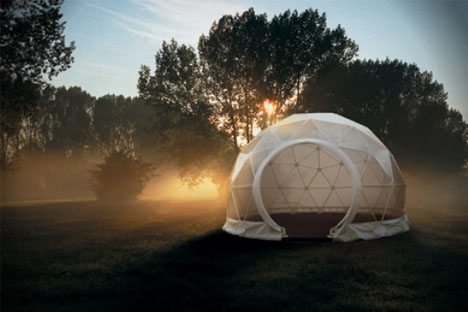
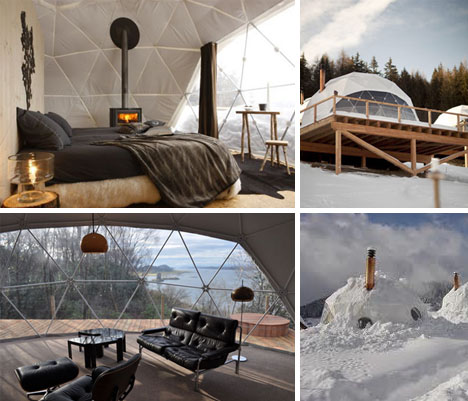
Popularized as festival structures and event spaces, for everything from white weddings to corporate functions, flexible modular geodesic domes have enjoyed a rapid resurgence in recent years – and making them into habitable structures appears to be the latest frontier, with companies like Zendome leading the pack.

Some are simply shade structures used for covering pools or providing guest quarters and playhouse spaces for kids, but others come equipped with kitchens, bathrooms and other full-time-living amenities.
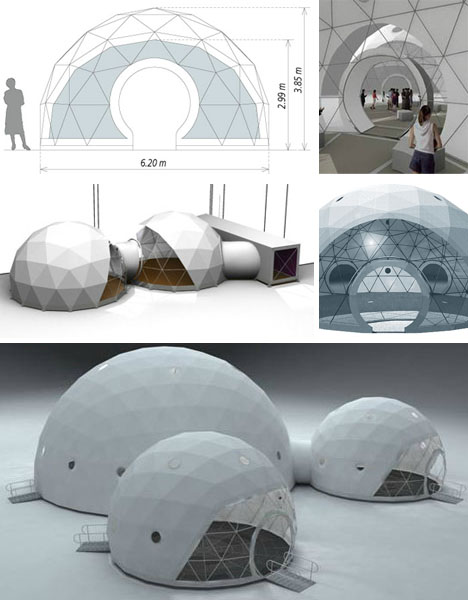
As off-the-grid, low-impact lodgings go, these kinds of frame-and-canvas structures are about as good as it gets. Lightweight and low impact, they can be quickly constructed between just one or two people and dismantled as easily and efficiently as well (not to mention: interconnected, extended and added to down the line).
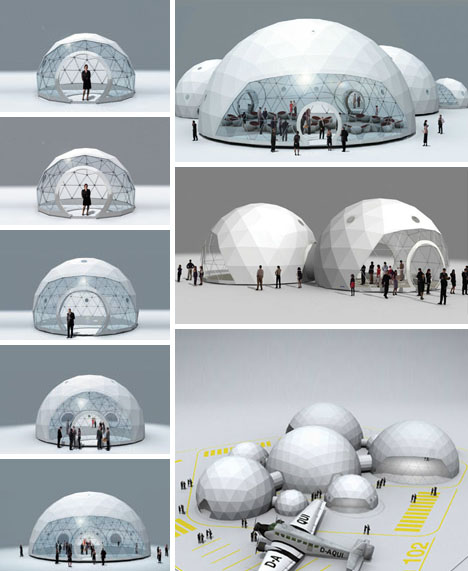
The frameworks are constructed of galvanized power-coated steel, then wrapped in an all-weather membrane of PVC-coated polyester (both water-tight and flame-resistant). Starting at over $10,000, though, they are still anything but cheap.
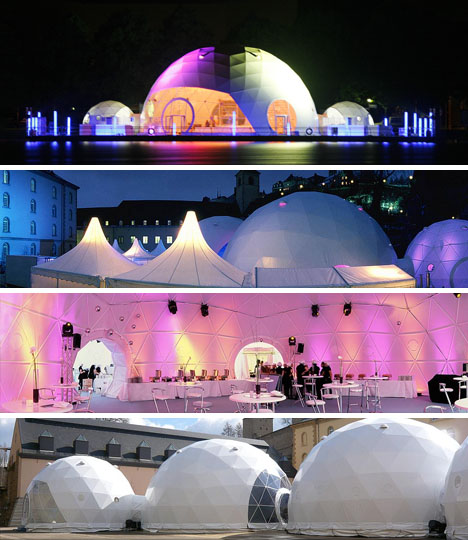
What would be really neat to see, though, is a combination of their portable-but-large-scale and permanent-but-home-size applications – whole networks of interconnected rooms designed not just for events but for full-time dwelling, too. But there is time – after all, geodesics have a long history, and doubtless far further yet to travel:
"For centuries mankind has been searching for the perfect form. Around 600 BC the Pythagoreans tried to split up a sphere into smaller and smaller segments. The so gained Tetrahedron, cube and decahedron forms were further investigated and split up by the Greek Philosopher Plato in his Academy. The platonic geometric forms are still named after him (Tetrahedron, Icosahedron and Octahedron as well as the cube) and were presented as well as described in mathematical formulas by Euclid in his XIII book of elements (300 BC). With the help of these formulas Johannes Kepler was able to describe the orbital radius of the then known six planets by means of a certain combination of these five forms and their inner and outer spheres in his "Mysterium Cosmographicum" (1596)."





















